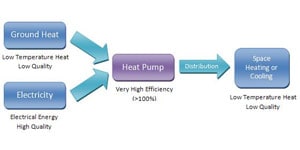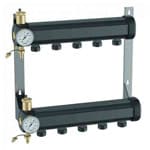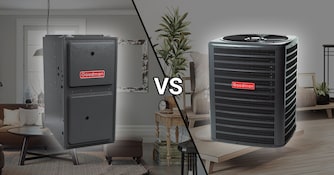
How to 'Go Green' Using Geothermal Energy
We're used to taking our body's temperature when we're sick, the indoor temperature when we're uncomfortable, and the outdoor temperature when we're leaving our home for the day.  
 
It's not too often, though, that one considers checking the temperature below the earth's surface. Granted, it's not likely that this measure will impact any of your daily decisions. However, it can save you plenty of money if utilized the right way.
 
What Are Geothermal Heat Pumps?
Geothermal heat pumps have been around since the 1940s and use the heat energy from the ground to facilitate heating and cooling an indoor space.  
 
While the temperature of the air outside might range dramatically throughout the year, the earth's temperature stays relatively constant.  
 
This means that during the winter, the ground is generally warmer than the air, while during the summer, it's colder than the air.  How does this help a geothermal heat pump heat and cool more effectively? Well, it's pretty straight forward if you consider how a heat pump works.
 
How Do Geothermal Systems Work?
In short, a heat pump will move heat from one location to another (for a more detailed description, see our informational article on the topic).
 
This can mean moving heat from indoors to outdoors in the summer, doing the reverse in the winter. As temperatures drop too low in the winter, an air-source heat pump will struggle to pull heat from the outdoor air.  
 
This reduces efficiency and is the reason for some homes requiring a backup heat source for times of extreme cold.  Since the ground is warmer than the air in the winter, a geothermal heat pump can easily steal heat from the ground and transfer it to your indoor air. In the summer, a geothermal heat pump will take advantage of the colder temperature of the ground compared to the air and transfer more heat before returning with cold refrigerant.

 
Why Doesn't Everyone Use Geothermal Technology?
One negative about geothermal heat pumps is their price.  The high upfront cost has made it more common to find geothermal heat pumps in commercial applications than in residential ones.  However, overall, the geothermal market is reportedly growing steadily.  
 
While it may be more difficult for residential applications to see returns very soon, larger applications can expect to see returns very quickly. One example of this growing trend is the Greater Binghamton Airport in New York. The airport announced that they would be using a geothermal system to heat an aircraft parking ramp.  
 
This makes them the first (and hopefully not last) airport in America to take advantage of this great technology.  The system will be able to both cool the indoors during the summer and melt snow on the pavement during the winter, while significantly reducing greenhouse emissions compared to their previous solution. If you're considering using a geothermal heat pump for any application, we sell a variety of manifolds to support your project.  As always, please contact us with any questions you may have.  Our Product Advisors and Engineers are happy to help!
 





